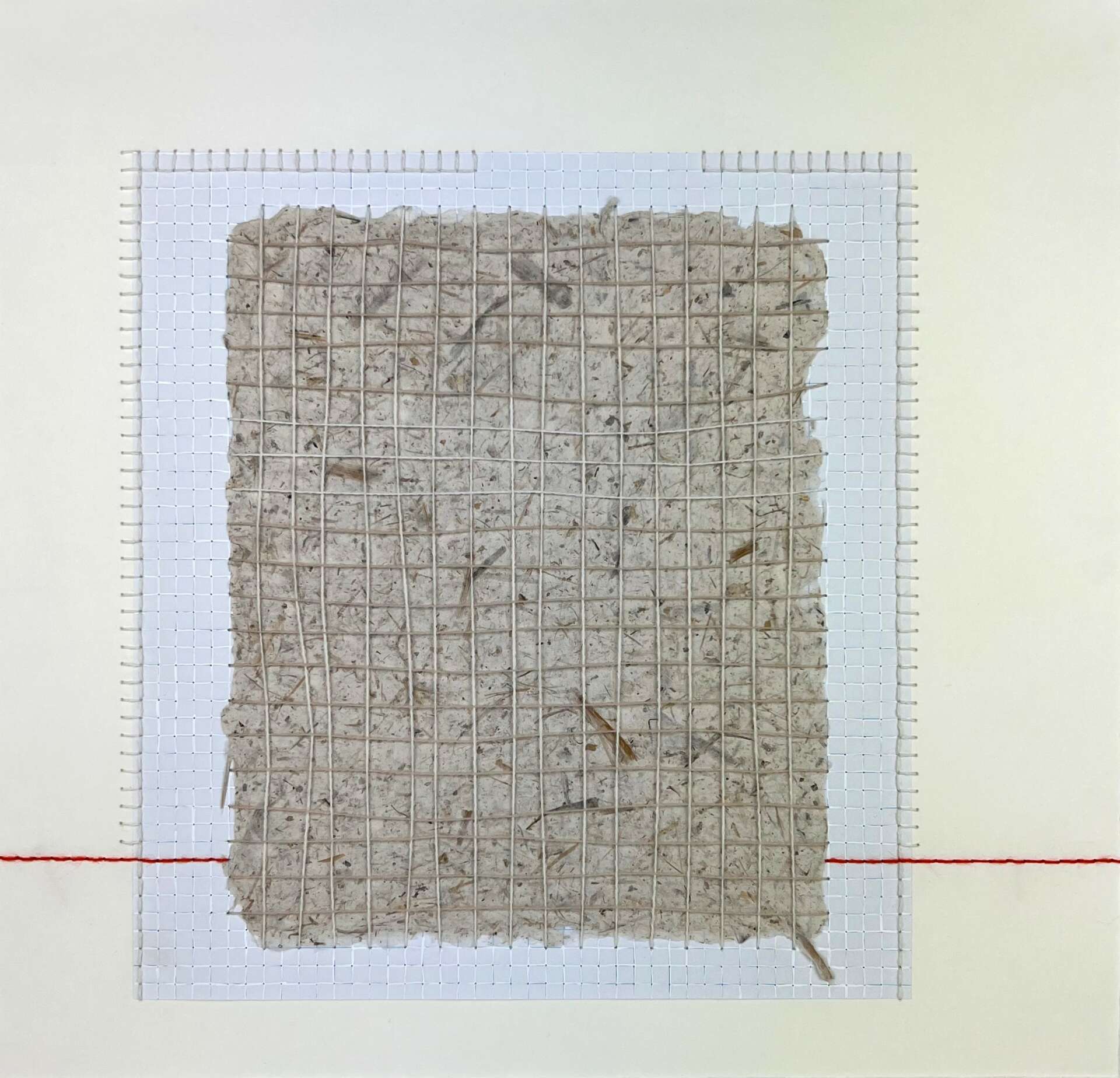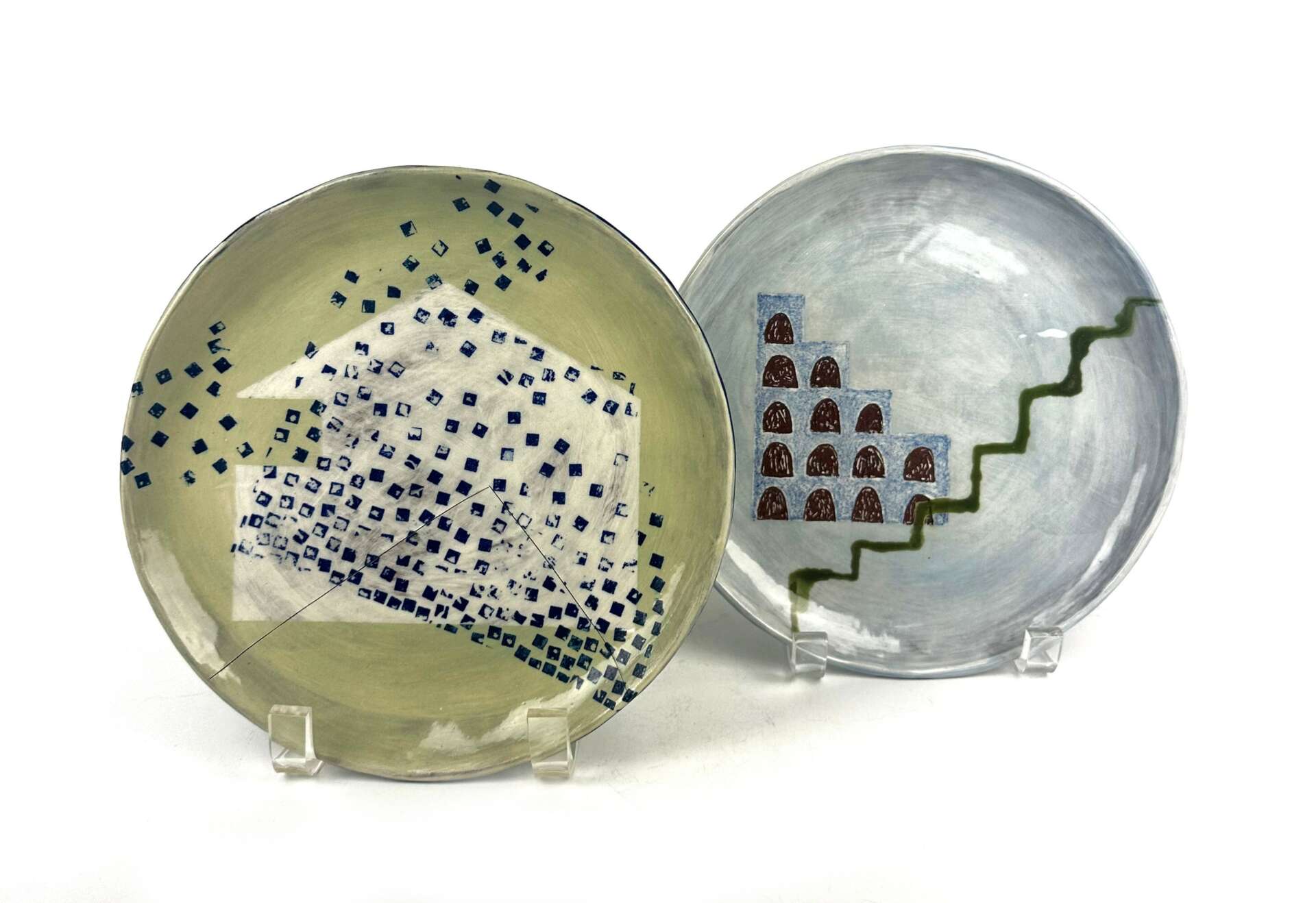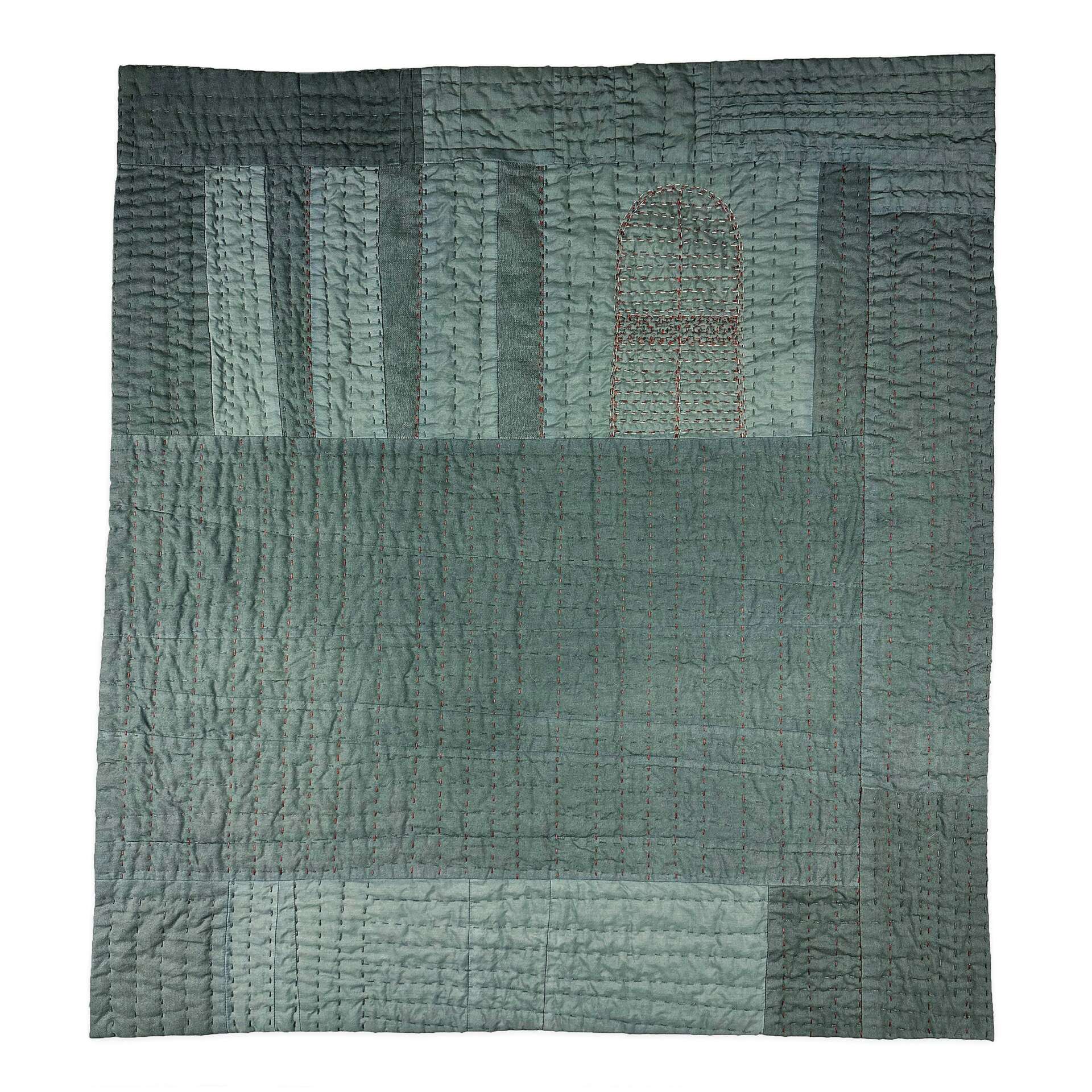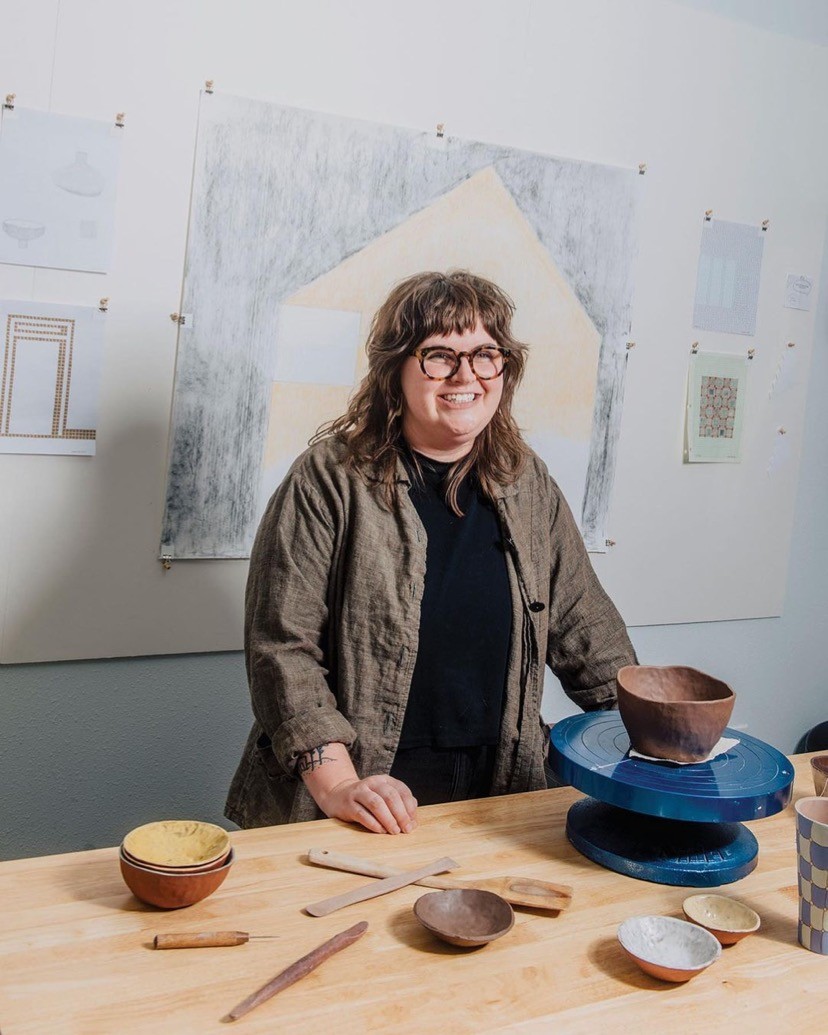We’re excited to introduce you to the always interesting and insightful Casey Engel. We hope you’ll enjoy our conversation with Casey below.
Casey , looking forward to hearing all of your stories today. We’d love to hear the backstory behind a risk you’ve taken – whether big or small, walk us through what it was like and how it ultimately turned out.
This year, I took a significant artistic risk with my quilt, “Shutter,” which was featured in a group exhibition at Blue Spiral 1 gallery in July. Initially constructed from scrap white, cream, and gray fabric, the piece felt predictable, with the focal point being a densely stitched shutter. Dissatisfied, I decided to bring it home and dye it a rich teal forest green.
The wet fabric showed promise, but upon drying, it became too subtle. After weeks of contemplation, I opted for a bold move based on color theory: stitching back into the quilt with a brilliant rusty red until it achieved graphic intensity from a 10 ft distance.
This risk transformed “Shutter” from a disjointed piece to a vibrant exploration of color, texture, and form. It now stands as a testament to the power of embracing uncertainty in the pursuit of artistic evolution. Always take the risk. Even if it doesn’t always work out, it is a crucial step in discovering what comes next.


Casey , before we move on to more of these sorts of questions, can you take some time to bring our readers up to speed on you and what you do?
I am an interdisciplinary artist specializing in textiles, ceramics, and printmaking, with each process influencing and inspiring new work. My creative approach revolves around abstraction and intuitive processes, driven by a quest for risk, surprise, and transformation. Rooted in memory, my current focus is primarily on sculptural works.
Whether I’m working on paper, printing a woodcut, or drawing, I incorporate hand stitching, collage, or even machine sewing into the process. My artistic journey began in college when I decided to take a drawing class, leading me to withdraw from my initial college and transfer to the School of the Art Institute of Chicago for foundational training.
Throughout my education, I was encouraged to explore various materials and processes, a philosophy that resonates in my current studio practice. A common thread in all my artistic endeavors is a deliberate slowness. My fiber practice, for instance, involves creating wall quilts using textiles that have served practical functions in human life, such as tablecloths, napkins, and garment remnants. These materials, having lived a functional life, are then memorialized on the wall through meticulous hand quilting.
The deliberate slowness extends to my ceramics and printmaking work, where hand-building with clay and hand-printing woodcuts add to the meditative pace of my studio practice. Despite the fast-paced nature of life, my studio becomes a haven of slow, intentional creation. I take pride in this deliberate approach, and I want potential clients, followers, and fans to know that my work is a reflection of this thoughtful and transformative process.


Looking back, are there any resources you wish you knew about earlier in your creative journey?
Many artists who have attended art school can likely relate to this sentiment. Looking back, I wish I had a better understanding of what to expect after graduation, particularly in terms of the various paths artists can pursue to sustain themselves. Despite this, the journey has unfolded in a way that has worked out for the best. Navigating the post-school landscape requires stepping out, networking, and figuring things out independently.
One crucial lesson I’ve learned is the importance of being part of an artist community that mirrors the supportive environment of school. While I felt unprepared for the isolation after graduating, I was fortunate to have a mentor who provided valuable guidance. Having attended an esteemed college and developed meaningful relationships with instructors and graduate students, I still felt lost about what to do next.
My mentor, who had owned a frame shop in the past, proved instrumental in preparing me for the real world. She shared a valuable insight that printmakers often make excellent framers and suggested I explore framing as a reliable trade. This path not only offered full autonomy over my work but also ensured a skillset in demand. In hindsight, this advice was a game-changer in navigating the post-art school landscape.


Can you tell us about a time you’ve had to pivot?
Around 5-1/2 years ago, I faced a significant career pivot when I decided to forego my applications for Master of Fine Arts (MFA) programs and instead embraced a role at Blue Spiral 1, a prominent commercial fine art and craft gallery in Asheville.
From my undergraduate days, the idea of attending graduate school was ingrained in me. I actively researched grad schools even during undergrad and was convinced that a career in academia was my destiny. After three years out of school, I was diligently building a portfolio for grad school, attending National Portfolio Day, interviewing at top schools, and feeling optimistic about my chances. However, during this process, I stumbled upon a job listing at Blue Spiral 1, the preeminent gallery in Asheville and arguably the Southeastern US. Surprisingly, within a week, I secured the job.
In my initial conversation with the Director, I recognized the invaluable opportunity to learn the commercial gallery world from the inside out. This job proved to be a transformative experience, providing insights into approaching galleries, cultivating ideal gallery-artist relationships, refining sales skills, mastering documentary photography and Photoshop, and understanding exhibition installation, professional practices, and curation.
Now serving as the Exhibitions Coordinator for Blue Spiral 1, my responsibilities include curation, artist relations, and collaborative planning of the exhibition calendar. While I still teach, my focus shifted from academia to the craft school workshop sector, aligning better with my teaching style. Thriving when teaching myself, I’ve invested in numerous continuing education classes, both in person and virtually. Despite the allure of grad school, I can confidently say that I am thrilled with the direction my life took by steering away from that path.


Contact Info:
- Website: www.caseyengel.net
- Instagram: casey__engel
Image Credits
Headshot – Credit Clark Hodgin


